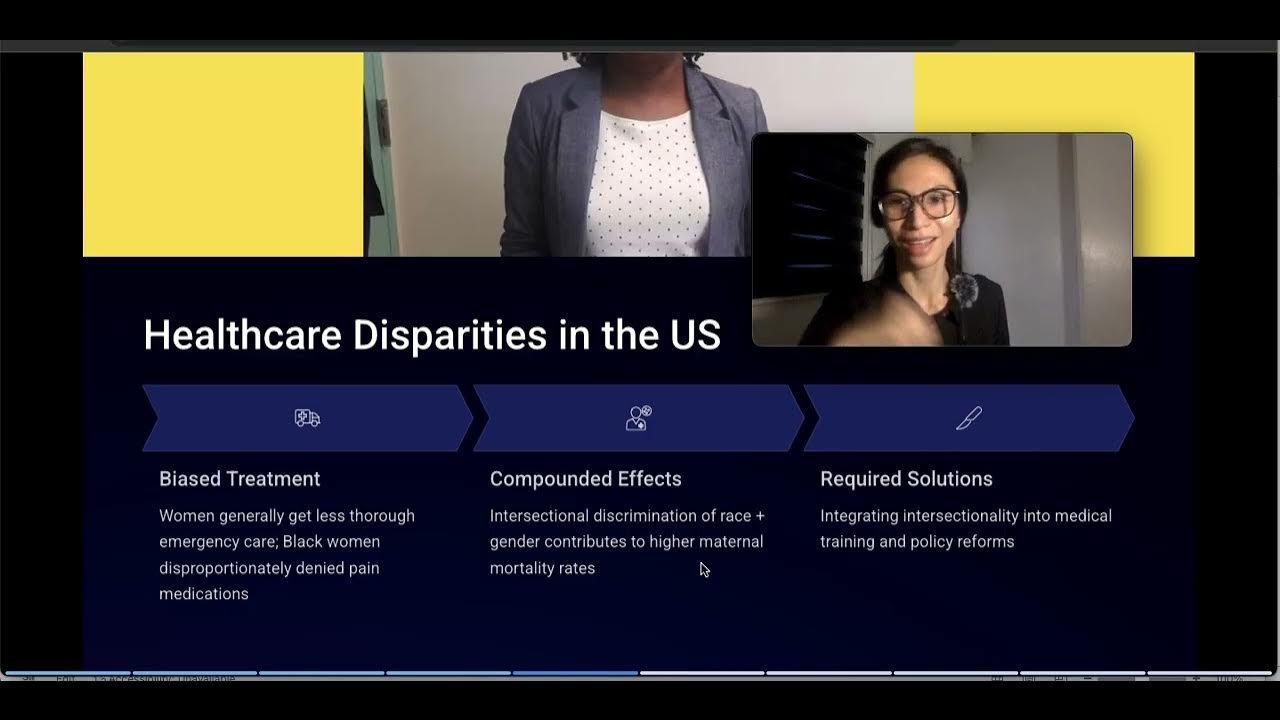Understanding Intersectionality of Disability and Economic Inequality 🌟
Summary
TLDRThis lecture explores the intersectionality of disability with social categories like race, gender, and class. It examines how disability is often overlooked in sociological studies of inequality, despite its significant impact on economic, social, and political outcomes. The discussion highlights the complexities of disability as both a physical and social construct, and how it intersects with race, class, and gender to exacerbate disadvantages. Critical race feminist perspectives, along with disability studies, are used to critique systems of oppression, emphasizing the need for more inclusive intersectional analyses.
Takeaways
- 🧑🦽 Disability is an important social category tied to unequal distribution of socioeconomic and political resources, but often overlooked in studies of inequality.
- 🔄 Disability is a fluid and ambiguous status that can change throughout a person's life, becoming more prevalent with age.
- 🏛️ Critical race feminists like Patricia Williams and Angela Harris discuss how disability intersects with race, class, and gender, often being overlooked in traditional analyses.
- 🔍 Nuance Theory highlights how black women's oppression is an intensified example of white women's oppression, but it also suggests the non-analysis of disability as a point of intersection.
- 🌐 Intersectionality of disability reveals how social categories like race, class, gender, and disability mutually construct each other, contributing to inequality.
- 📉 Women, racial minorities, and people with disabilities face compounded economic insecurity, experiencing higher poverty rates and more reliance on non-labor market sources for economic stability.
- 🏢 Disability is often misunderstood as a biological category, but scholars in disability studies argue it is socially constructed, reflecting cultural norms about bodies and abilities.
- 🏥 The historical and social construction of disability often intersects with race, leading to devaluation of non-white and disabled bodies, justified by economic and social hierarchies.
- 🔗 The social-political model of disability challenges the idea of normality, focusing on how society views and constructs disability rather than seeing it purely as a physical or medical condition.
- 💼 Economic insecurity disproportionately affects marginalized groups, including women, racial minorities, and people with disabilities, especially in a climate of reduced social safety nets and market deregulation.
Q & A
What is the importance of disability as a social category in the distribution of resources?
-Disability is an important social category that affects the distribution of social, economic, and political resources. However, it is less commonly understood as a source of inequality in sociological studies, making it a critical aspect in the discussion of social injustice.
Why is disability considered fluid and ambiguous in its classification?
-Disability is fluid and ambiguous because individuals may identify as disabled at different times in their lives, often due to age or evolving health conditions. This fluidity makes it difficult to classify and politicize disability in a structured way.
How does critical race feminism (CRF) incorporate disability into its framework?
-CRF scholars, like Patricia Williams, recognize disability, but often use it as a descriptor of difference. Angela Harris discusses how 'Nuance Theory' relates to black women’s oppression, but CRF has been critiqued for not fully analyzing disability as it intersects with race, class, and gender oppression.
What is the significance of Nuance Theory in feminist and CRF analysis?
-Nuance Theory, as described by Angela Harris, positions black women’s oppression as an intensified version of white women's oppression. However, the theory has been critiqued for overlooking the role of disability in shaping experiences of inequality.
How does disability intersect with other social categories like race, gender, and class?
-Disability intersects with race, gender, and class to create compounded disadvantages. For example, people with disabilities who are also women or racial minorities tend to face higher levels of economic insecurity, lower social status, and more severe limitations in access to education and employment.
What is the social constructionist view of disability?
-The social constructionist view holds that disability is not just a biological or medical condition but a social construct shaped by cultural, political, and economic factors. It views disability as a deviation from societal norms about what bodies should be or do, rather than an inherent flaw in individuals.
What role does disability play in capitalist societies according to the lecture?
-In capitalist societies, disability serves as a mechanism to regulate and justify social and economic inequalities. It is used to control the distribution of surplus by attributing inequality to natural or biological differences, thus supporting social hierarchies.
How do special education systems reflect broader social hierarchies related to disability?
-Special education systems are often used to segregate students who disrupt the normal functioning of schools, reinforcing social hierarchies. Instead of being tailored to meet the needs of disabled students, they can become a tool for marginalizing and isolating these individuals within educational contexts.
How does the intersection of disability, race, and economic insecurity manifest in the labor market?
-People with disabilities, especially those who are also racial minorities or have less education, face higher levels of economic insecurity. They often experience employment discrimination, lower earnings, and must rely on government support, family, or savings to maintain financial stability.
What are the implications of neoliberal policies for people with disabilities?
-Neoliberal policies, characterized by cutbacks to social safety nets and disability programs, have worsened economic insecurity for people with disabilities. These policies shift the responsibility of managing financial risks onto individuals, making it harder for marginalized groups to access necessary resources and support.
Outlines

Cette section est réservée aux utilisateurs payants. Améliorez votre compte pour accéder à cette section.
Améliorer maintenantMindmap

Cette section est réservée aux utilisateurs payants. Améliorez votre compte pour accéder à cette section.
Améliorer maintenantKeywords

Cette section est réservée aux utilisateurs payants. Améliorez votre compte pour accéder à cette section.
Améliorer maintenantHighlights

Cette section est réservée aux utilisateurs payants. Améliorez votre compte pour accéder à cette section.
Améliorer maintenantTranscripts

Cette section est réservée aux utilisateurs payants. Améliorez votre compte pour accéder à cette section.
Améliorer maintenant5.0 / 5 (0 votes)






